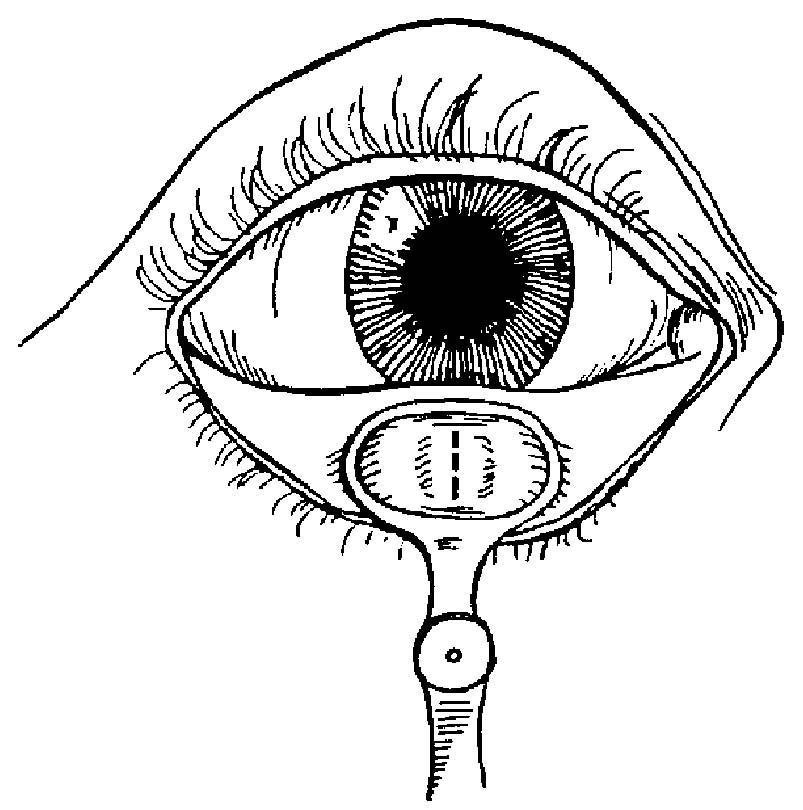Special Surgical Procedures II
LESSON 1: Eye, Ear, Nose, and Throat (EENT) Surgery
Section I: EYE SURGERY
1-9
1-9. PROCEDURES ON EYELIDS
a. Plastic Repair of Eyelid. Various reconstructive techniques may be employed by the surgeon in repairing the eyelid following lacerations or burns. Plastic repair may also be indicated as treatment for acquired malfunctions of the eyelid. Such malfunctions sometimes result from scars that form after the healing of injuries or burns of the lids. These malformations may be classified as follows:
(1) Ectropion. This is the rolling outward of the eyelid margin so that a portion of the conjunctiva is exposed. It is usually accompanied by epiphora (tears running down the cheek). This condition may be caused by injury or it may occur spontaneously in elderly persons with no history of injury.
(2) Entropion. This is the rolling inward of the lid margin so that it presses against the cornea and the eyelashes are in contact with the eyeball.
b. Tarsorrhaphy. This is the surgical closure of the lids by a plastic operation. It is indicated when the lids cannot close sufficiently to cover the cornea during sleep (exposure of the cornea results in the drying of its surface and produces corneal ulcer).
c. Excision of Chalazion. A chalazion is a small benign tumor of the eyelid. The removal of a chalazion is indicated when the chalazion fails to disappear without surgical intervention in the course of several weeks. (Approximately 70 percent of chalazia require excision.) In addition, excision is indicated if the chalazion progressively enlarges.
(1) The surgeon may excise the chalazion through either the conjunctival surface or the skin of the lid (see figure 1-3). The route of excision depends upon the surface upon which the chalazion is located. Very fine silk suture on a swaged-on needle is used if excision is through the skin surface. No suture is required if excision is through the conjunctival surface.
(2) A chalazion set is used with other instruments, supplies, and sutures according to the surgeon's preference.
d. Excision of Pterygium (Benign Growth of Conjunctival Tissue Over the Cornea). Removal of a pterygium is indicated when the pterygium is progressive and is invading the cornea.
e. Hordeolum (Sty). A sty is an infection of one or more glands of the skin of the eyelid. A painful lump occurs in the skin and the abscess, which can form may break through the surface and drain pus. Although the common treatment is application of hot compresses, pointing may necessitate opening and draining.
f. Ptosis. Ptosis is a drooping of the upper eyelid. It can be caused by neurological disorder, ocular conditions such as microphthalmus (abnormal smallness of the eves), and local injury such as traumatic rupture of the levator muscle as well as other malfunctions. Lid surgery may be indicated if other treatments cannot remove the causes.
Figure 1-3. Preparation of eyelid for Chalazion removal. The incision on the inner lid surface is to avoid scarring.


